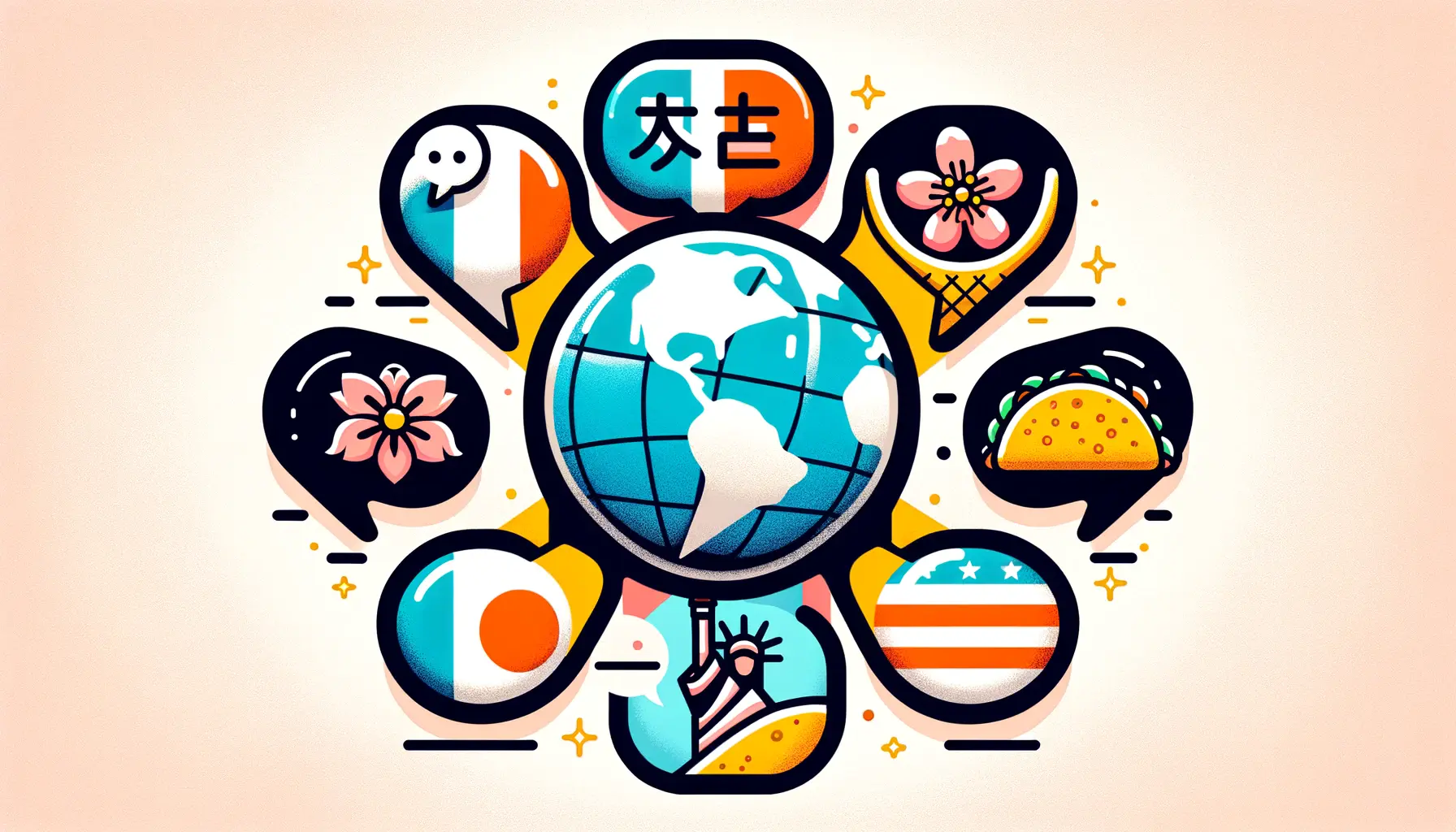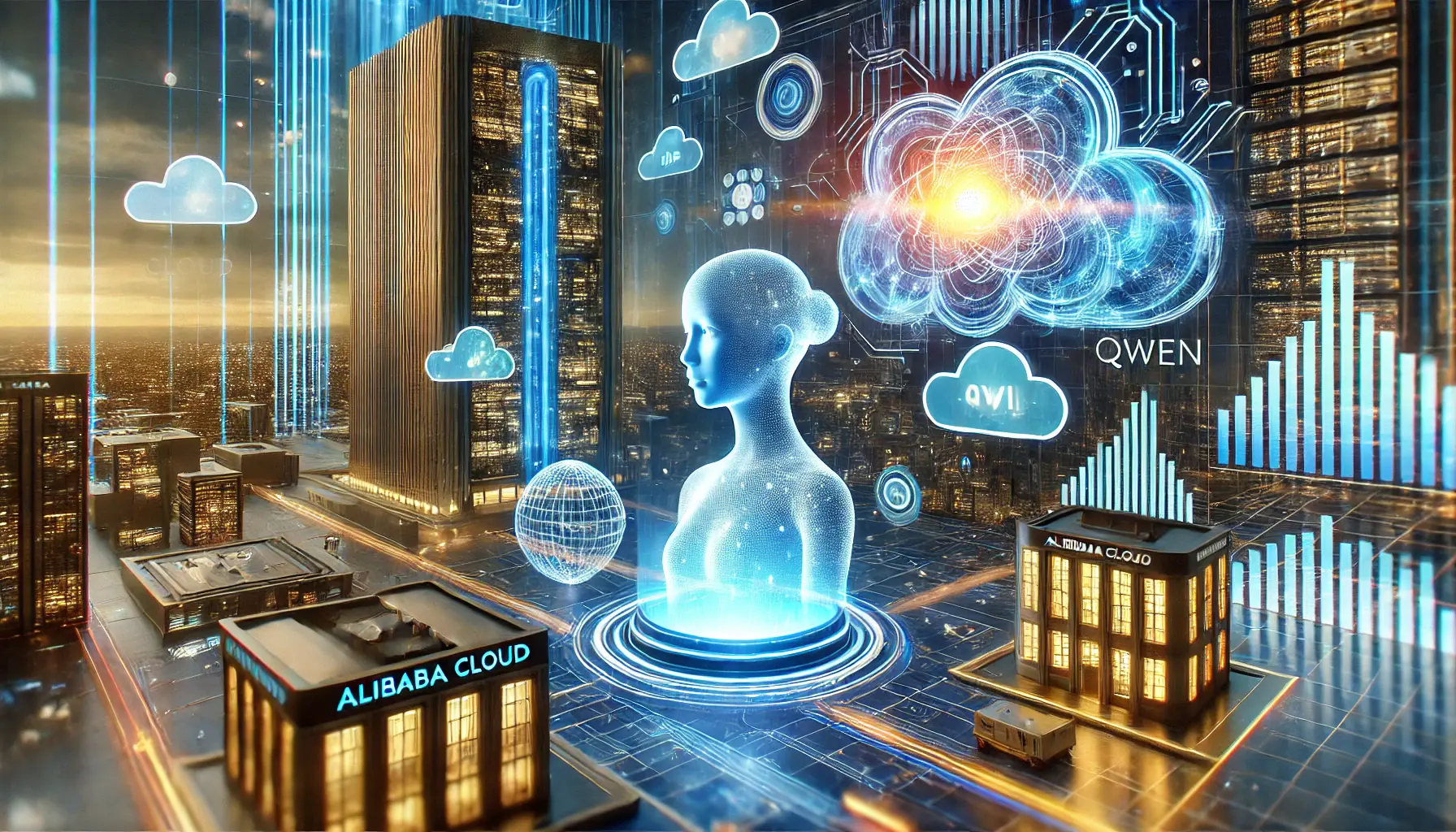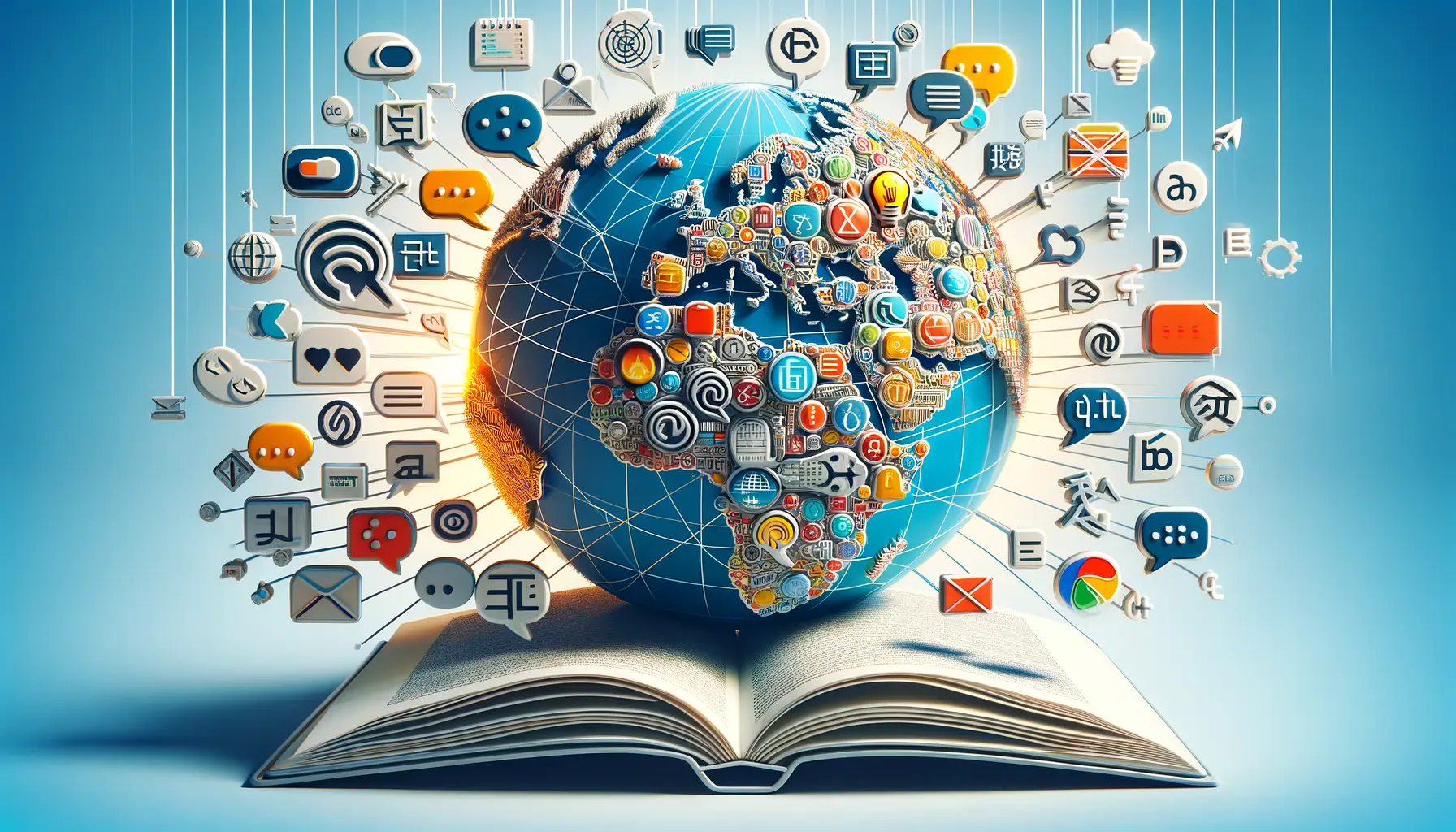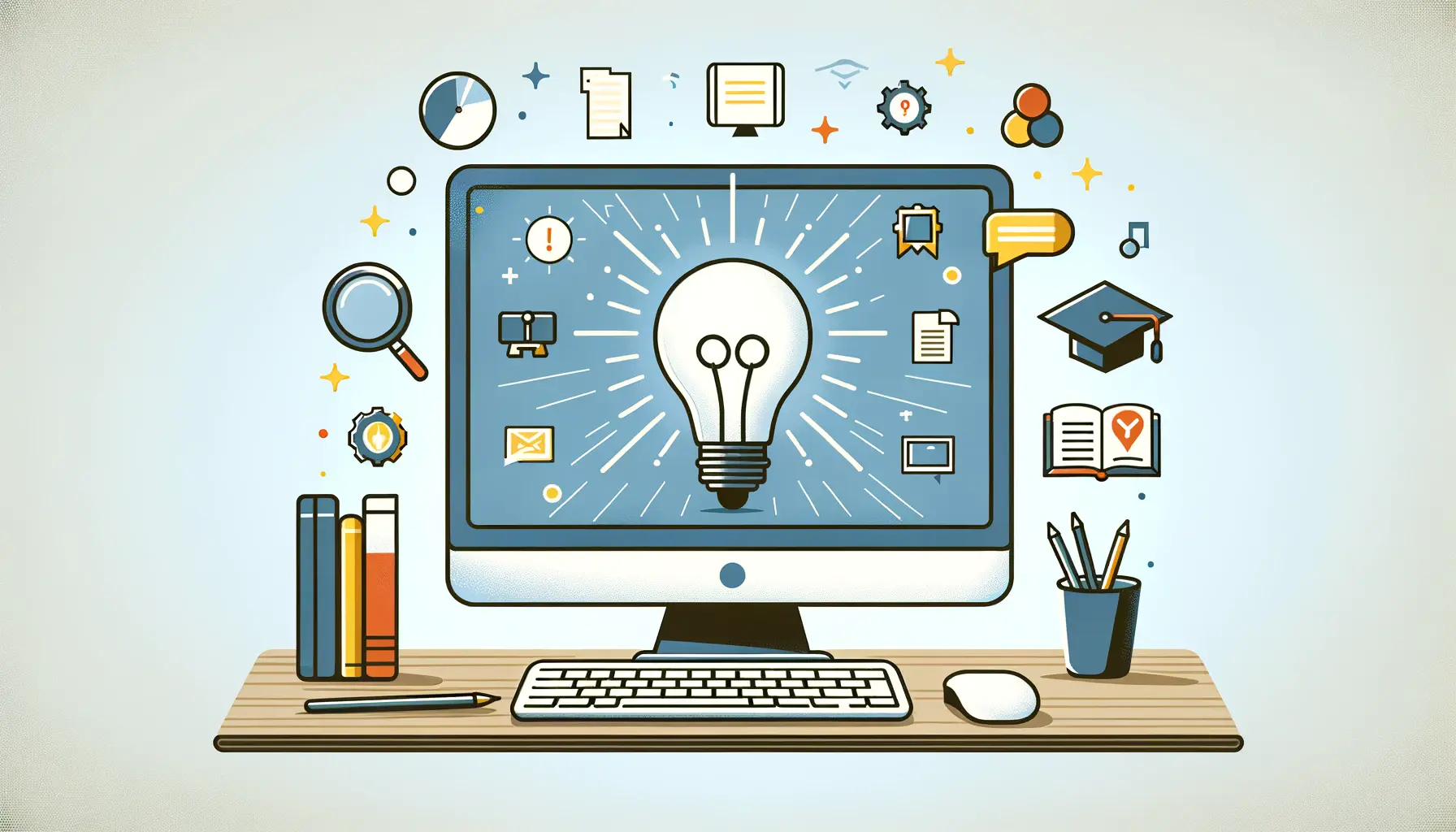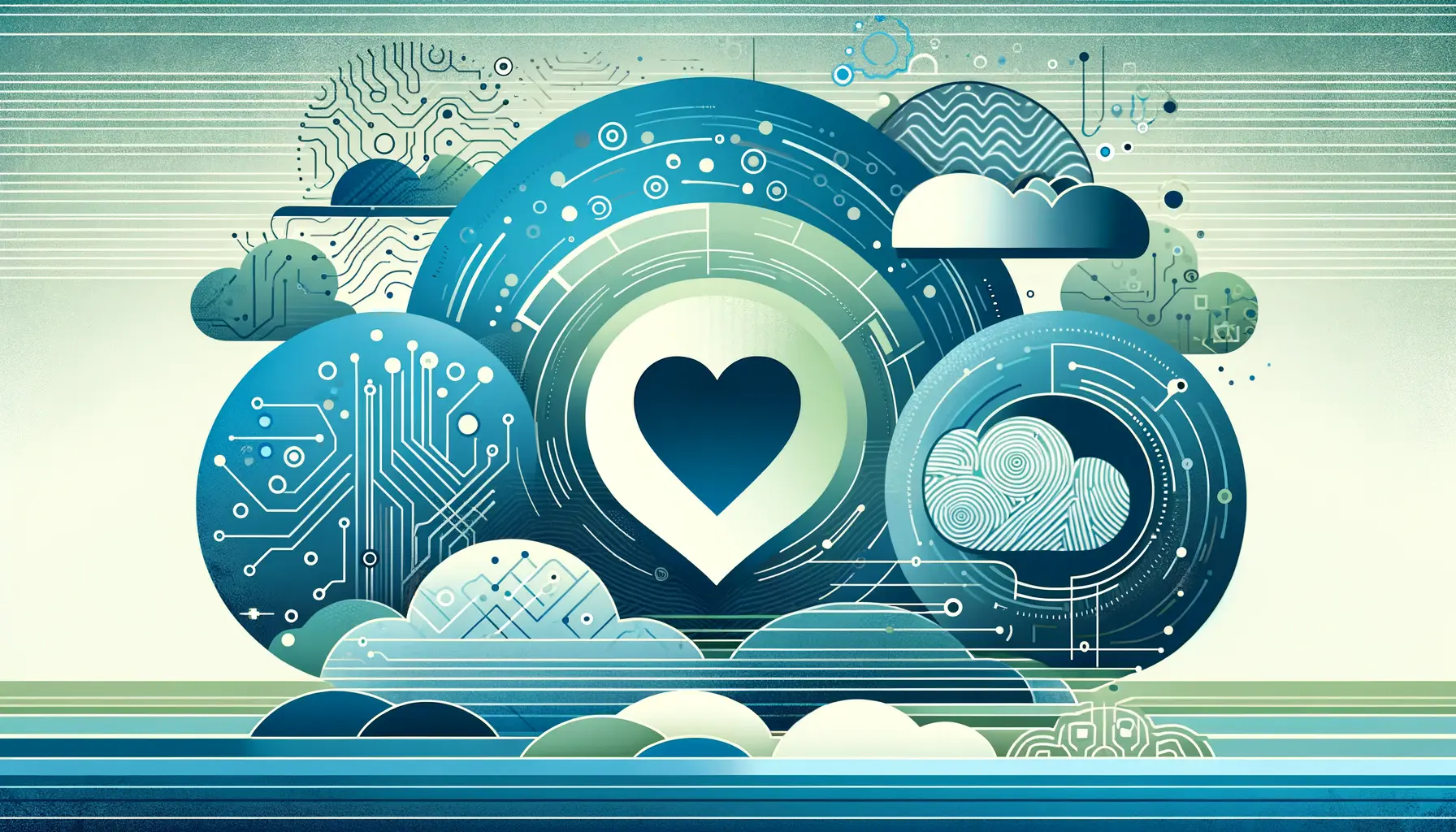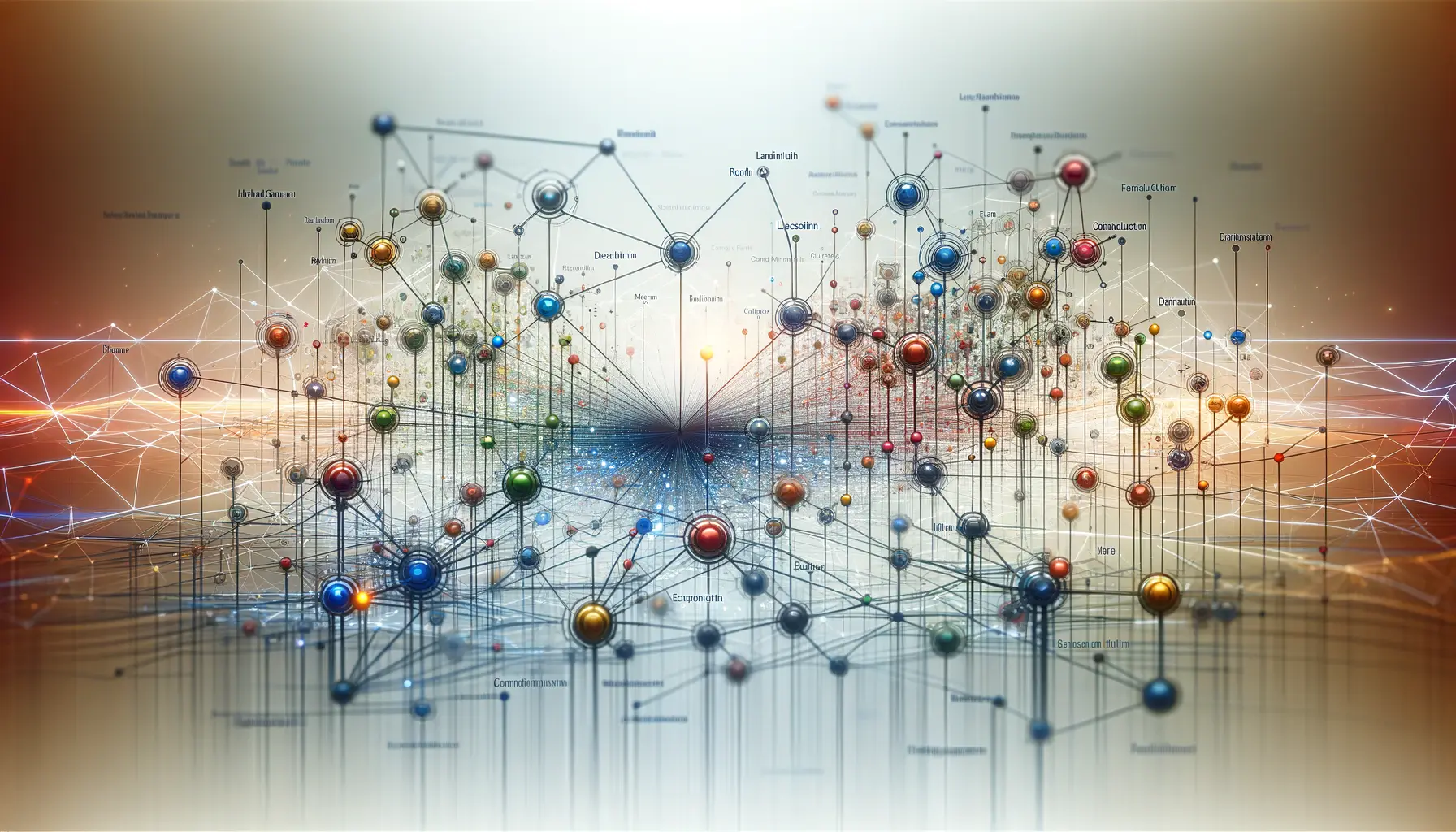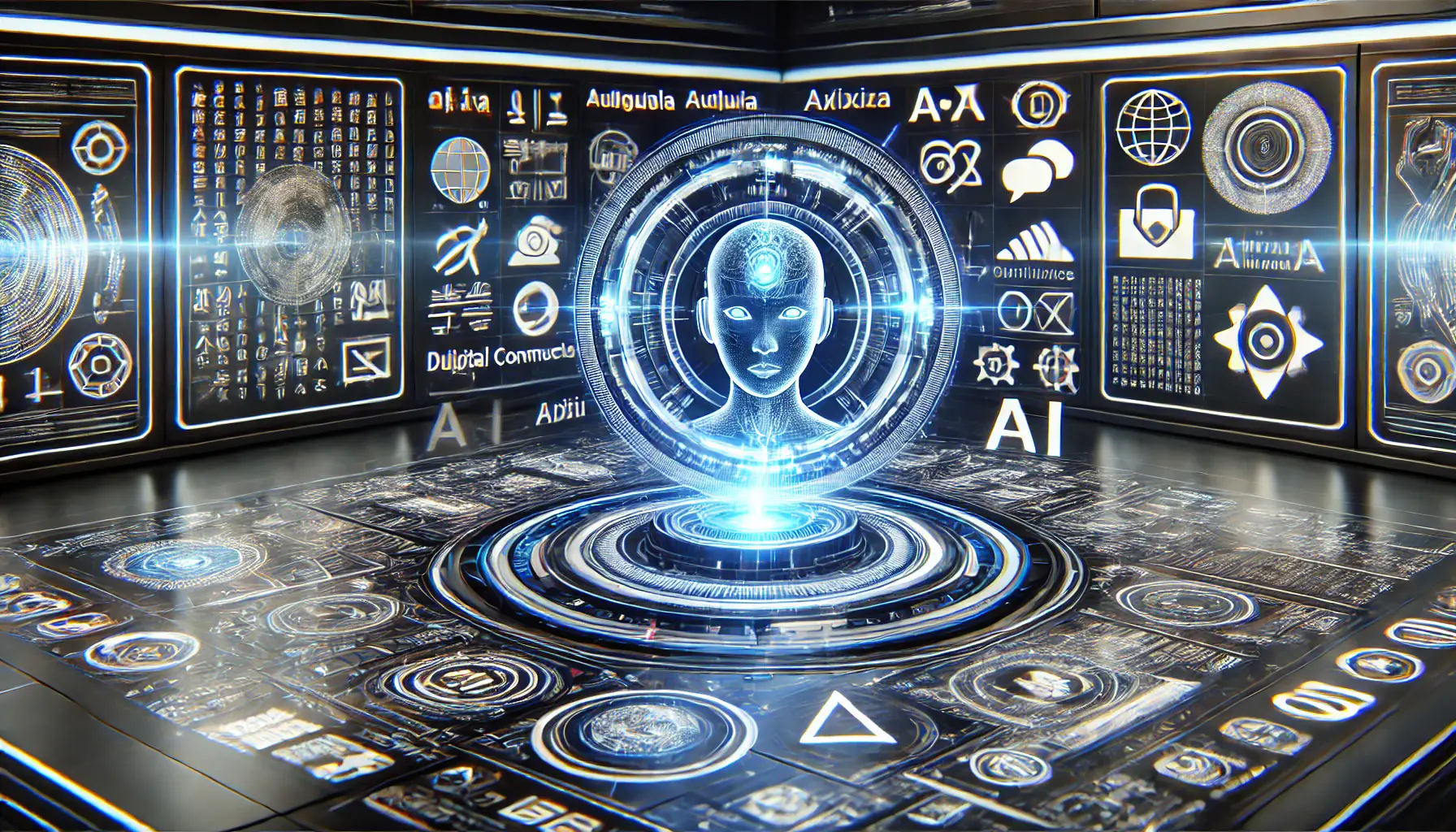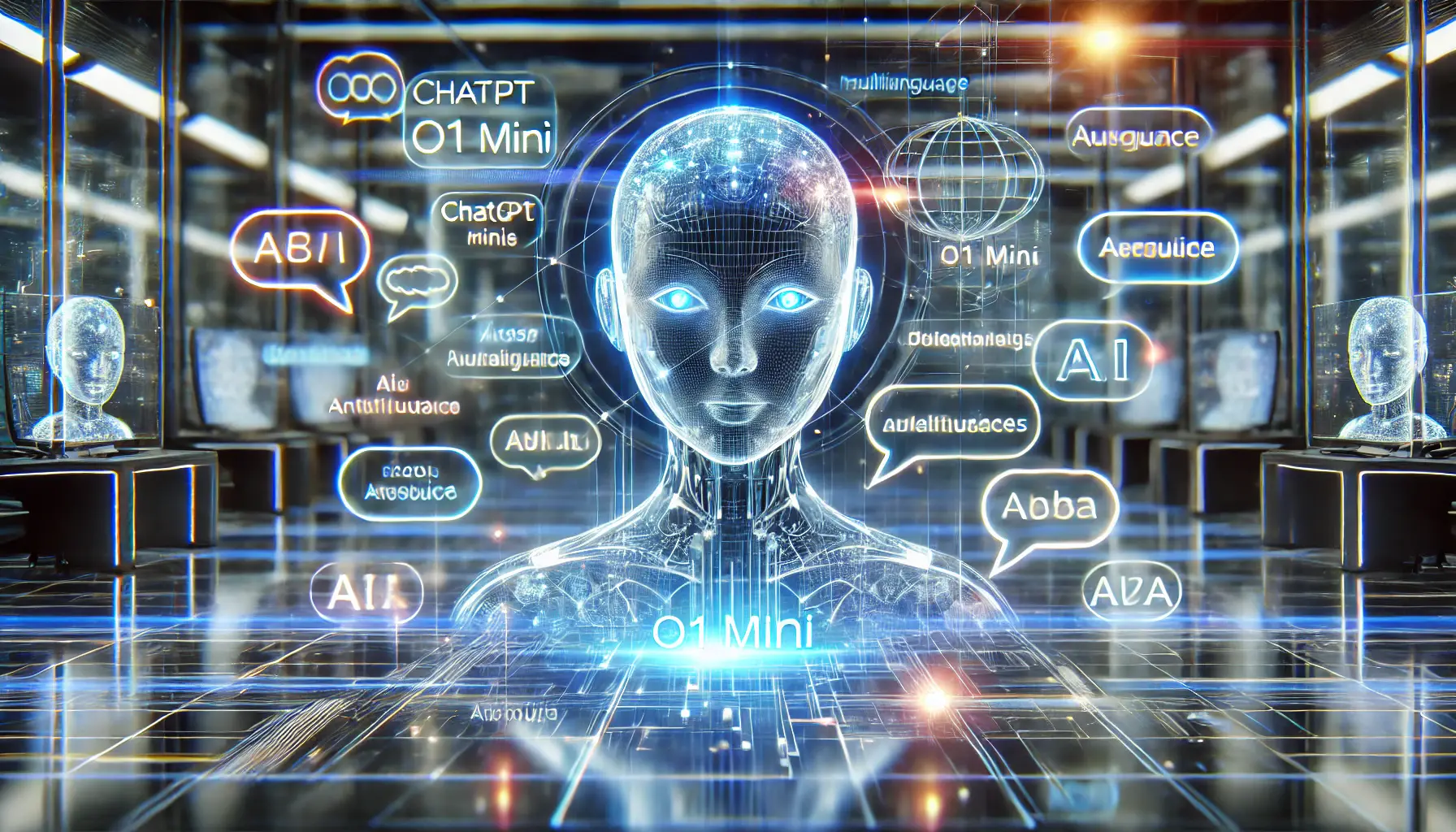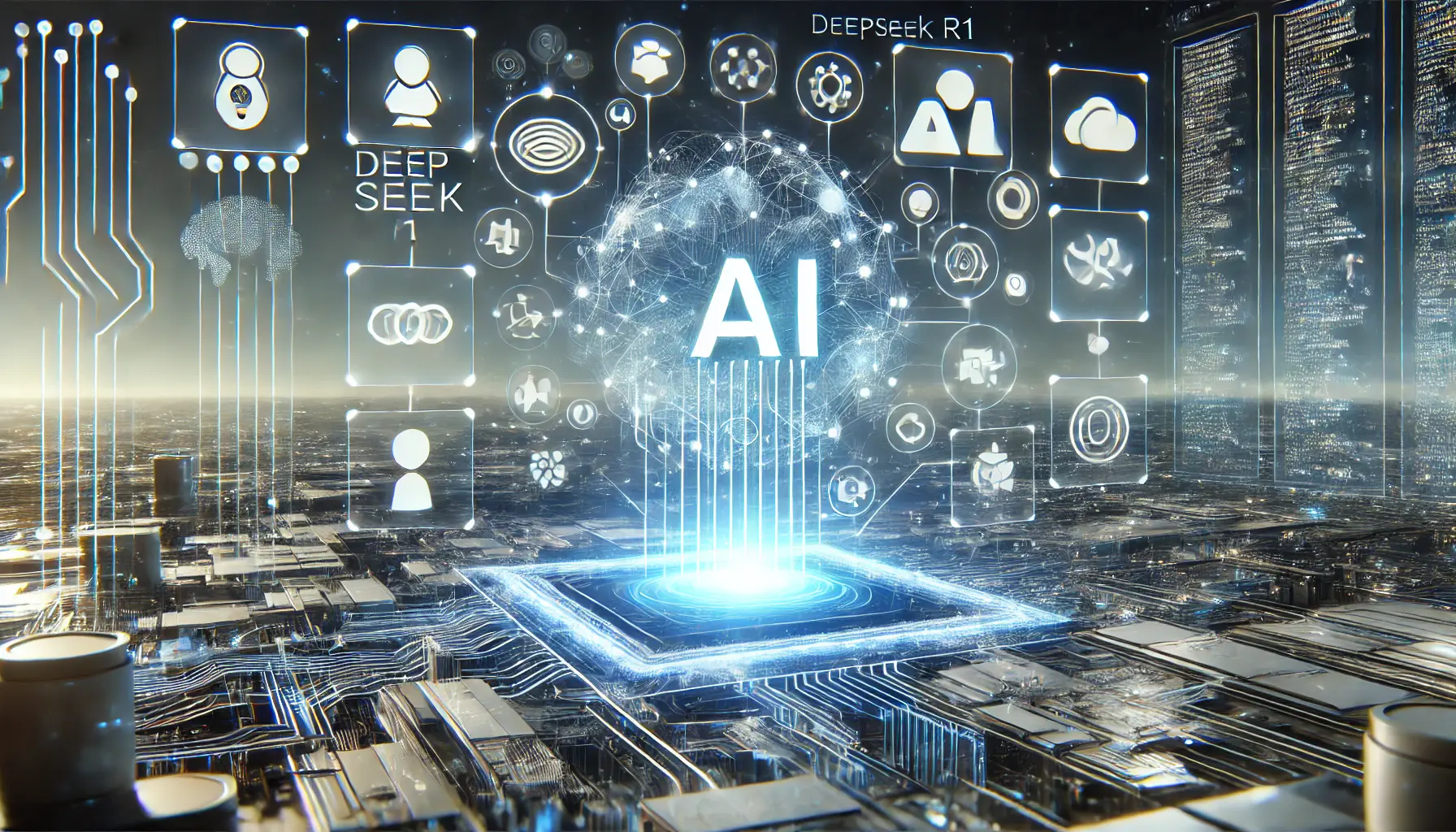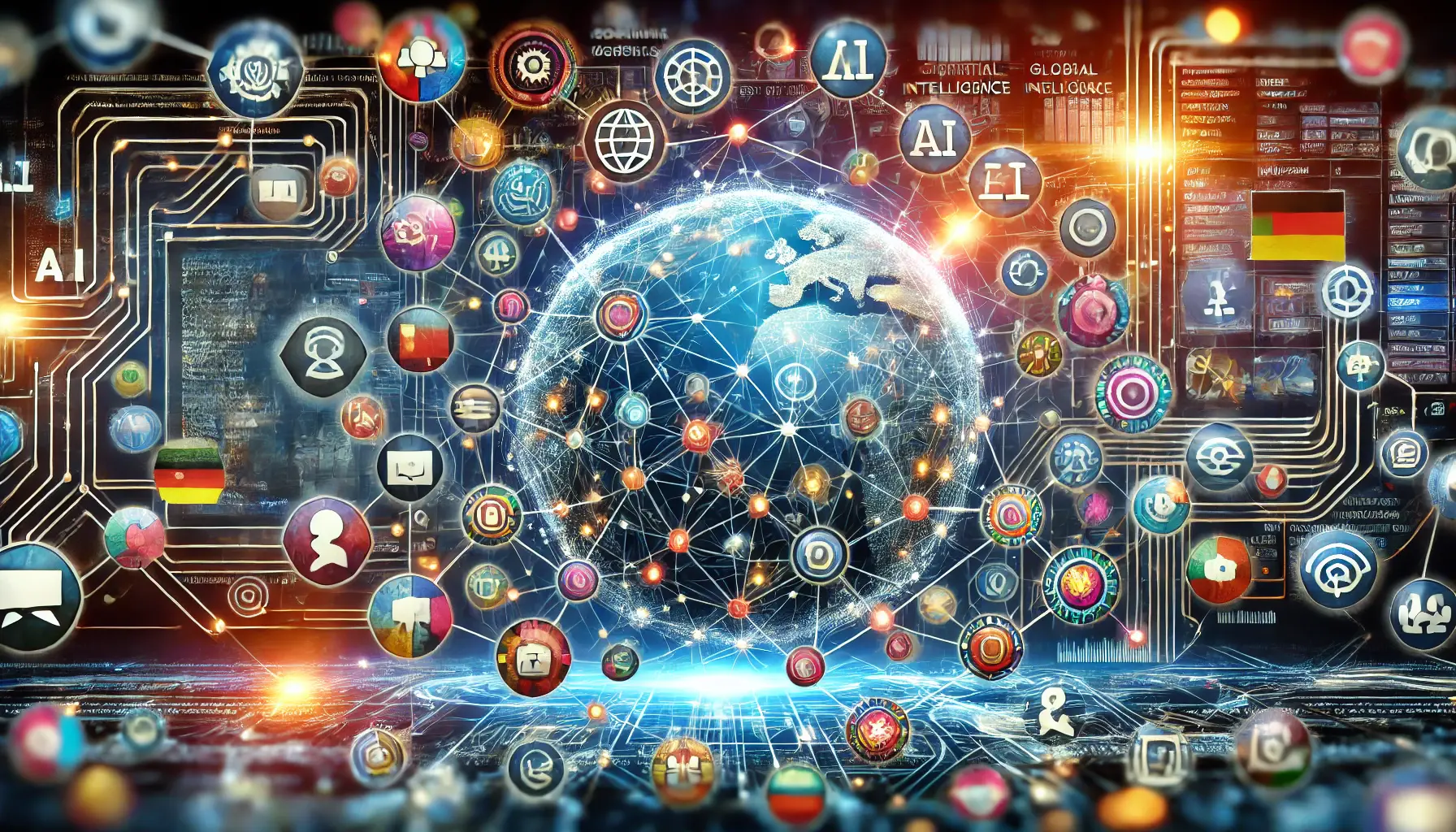The advent of ChatGPT 4 has marked a significant milestone in the realm of artificial intelligence, particularly in enhancing multilingual communication capabilities.
This latest iteration of the groundbreaking language model developed by OpenAI has been meticulously designed to understand, interpret, and generate text across a diverse spectrum of languages, thereby bridging the gap between technological innovation and global linguistic diversity.
With the world becoming increasingly interconnected, the demand for technology that can transcend language barriers has never been more critical.
ChatGPT 4’s multilingual support not only facilitates seamless communication across different cultures but also democratizes access to information, making it universally accessible regardless of the linguistic background of the user.
This feature is a testament to the strides being made towards creating a more inclusive digital world.
- Understanding ChatGPT 4’s Multilingual Capabilities
- Enhancing User Experience Across Cultures
- Challenges and Solutions in Multilingual Support
- Technological Innovations Behind ChatGPT 4’s Multilingualism
- Impact of ChatGPT 4 on Global Communication
- Best Practices for Utilizing ChatGPT 4’s Multilingual Features
- Future Directions of AI in Multilingual Communication
- Embracing the Multilingual Future with ChatGPT 4
- ChatGPT 4 Multilingual Support FAQs
Understanding ChatGPT 4’s Multilingual Capabilities
The Foundation of Multilingual Support
At the core of ChatGPT 4’s multilingual prowess is its extensive training on a vast corpus of text data sourced from a wide array of languages.
This comprehensive dataset includes not only major languages such as English, Spanish, and Mandarin but also less commonly spoken languages, thereby ensuring a broad linguistic coverage.
The model’s ability to understand and generate text in over 50 languages is a remarkable feat that sets it apart from its predecessors.
ChatGPT 4 employs sophisticated algorithms and natural language processing (NLP) techniques to accurately interpret the context and nuances of different languages.
This enables it to provide responses that are not only contextually relevant but also culturally and linguistically nuanced, thereby enhancing the user experience for speakers of various languages.
Expanding Global Communication
The multilingual capabilities of ChatGPT 4 have profound implications for global communication.
By breaking down language barriers, it enables individuals and organizations to communicate effortlessly with a global audience.
Whether it’s for personal use, such as learning a new language or understanding foreign texts, or for professional purposes like international business communications and customer support, ChatGPT 4’s multilingual support is a game-changer.
Moreover, this feature significantly contributes to the democratization of knowledge.
With ChatGPT 4, information and educational content can be made accessible in multiple languages, thereby reaching a wider audience and fostering a more inclusive environment for learning and information exchange.
ChatGPT 4’s multilingual support is not just a technical achievement; it’s a step towards a more connected and inclusive world where language no longer serves as a barrier to communication or access to information.
Enhancing User Experience Across Cultures
The introduction of ChatGPT 4’s multilingual capabilities has significantly enhanced the user experience, making it more inclusive and accessible to a global audience.
This advancement in AI technology has not only improved communication across different linguistic backgrounds but has also paved the way for a more culturally diverse interaction with technology.
One of the key aspects of this enhanced user experience is the model’s ability to adapt to the cultural nuances of each language.
This sensitivity to cultural context ensures that responses are not only accurate in terms of language but also appropriate and respectful of cultural differences.
This section explores how ChatGPT 4’s multilingual support enriches user interaction across various cultures.
Adapting to Cultural Nuances
- Understanding Idioms and Expressions: ChatGPT 4 can comprehend and use idioms and expressions unique to each language, enriching conversations with culturally relevant phrases.
- Respecting Cultural Sensitivities: The AI is designed to navigate cultural sensitivities, avoiding language or topics that may be considered inappropriate or offensive in certain cultures.
Case Studies of Multilingual Interactions
- Customer Support: Businesses have leveraged ChatGPT 4 to provide customer support in multiple languages, significantly improving customer satisfaction by offering help in the customer’s native language.
- Language Learning: Language learners use ChatGPT 4 as a tool to practice and improve their language skills, benefiting from the model’s ability to correct mistakes and provide explanations in their native language.
The ability of ChatGPT 4 to adapt to cultural nuances and provide support across various languages has made it an invaluable tool for fostering global communication and cultural exchange.
Challenges and Solutions in Multilingual Support
While ChatGPT 4’s multilingual capabilities represent a significant leap forward in AI language models, they are not without their challenges.
Ensuring accuracy, maintaining context across languages, and dealing with the scarcity of data in less commonly spoken languages are some of the hurdles that developers face.
This part delves into these challenges and the innovative solutions that have been implemented to overcome them.
Understanding these challenges is crucial for both users and developers, as it sheds light on the limitations of current AI technologies and the ongoing efforts to refine them.
By addressing these issues, ChatGPT 4 continues to evolve, offering more reliable and inclusive multilingual support.
Overcoming Data Scarcity
- Expanding Language Datasets: OpenAI has been actively working to broaden the datasets for ChatGPT 4, incorporating texts from a wider range of languages and dialects.
- Community Contributions: Encouraging contributions from native speakers and linguists to enhance the model’s understanding of less commonly spoken languages.
Ensuring Contextual and Cultural Accuracy
- Advanced NLP Techniques: Employing sophisticated natural language processing techniques to better grasp the context and cultural nuances of conversations.
- Continuous Learning: ChatGPT 4 is designed to learn from its interactions, allowing it to gradually improve its responses and understanding of cultural contexts.
Addressing Technical Limitations
- Algorithmic Improvements: Ongoing research and development efforts aimed at refining the algorithms that enable ChatGPT 4 to process and generate multilingual text.
- User Feedback Mechanisms: Implementing systems for users to provide feedback on the accuracy and appropriateness of responses, facilitating continuous improvement.
The path to perfecting multilingual support in AI is ongoing, with challenges serving as stepping stones towards creating a truly global and accessible technology.
Technological Innovations Behind ChatGPT 4’s Multilingualism
The technological backbone of ChatGPT 4’s multilingual capabilities is a testament to the rapid advancements in artificial intelligence and machine learning.
This section explores the cutting-edge innovations that enable ChatGPT 4 to understand and generate text in multiple languages, highlighting the role of deep learning, transformer models, and large-scale datasets in achieving this feat.
These innovations not only empower ChatGPT 4 to break language barriers but also lay the groundwork for future developments in AI-driven multilingual communication.
By understanding the technology behind ChatGPT 4, we can appreciate the complexity and potential of AI to connect the world in new and meaningful ways.
Deep Learning and NLP
- At the heart of ChatGPT 4’s language processing capabilities are deep learning algorithms that analyze and generate text. These algorithms use vast amounts of data to learn language patterns, grammar, and syntax across different languages.
- Natural Language Processing (NLP) techniques enable the model to understand the meaning and context of words and phrases, allowing for accurate translations and culturally relevant responses.
Transformer Models
- ChatGPT 4 utilizes transformer models, a type of neural network architecture designed specifically for handling sequential data, such as text. Transformers are particularly adept at managing long-range dependencies in language, making them ideal for understanding the complex structure of human languages.
- The ability of transformer models to process entire texts at once, rather than one word at a time, contributes to the model’s efficiency and accuracy in multilingual communication.
Large-Scale Datasets
- The training of ChatGPT 4 on large-scale, multilingual datasets is crucial for its ability to support a wide range of languages. These datasets include texts from books, websites, and other sources, covering a diverse array of topics and styles.
- By learning from such a comprehensive collection of language data, ChatGPT 4 can understand the nuances of different languages and generate responses that are not only linguistically accurate but also contextually appropriate.
The technological innovations behind ChatGPT 4’s multilingual support are driving a new era of AI communication, making it more inclusive and accessible to people around the globe.
Impact of ChatGPT 4 on Global Communication
The advent of ChatGPT 4 has significantly altered the landscape of global communication, offering unprecedented opportunities for cross-cultural interaction and understanding.
Its multilingual capabilities have not only facilitated smoother conversations across language barriers but have also empowered individuals and businesses to connect on a more global scale.
This part examines the profound impact of ChatGPT 4 on international dialogue, education, and commerce.
By enabling more effective and nuanced communication between diverse linguistic groups, ChatGPT 4 is helping to foster a more interconnected and empathetic world.
The implications of this technological breakthrough extend far beyond mere translation, touching upon the very essence of human connection and collaboration.
Facilitating Cross-Cultural Interaction
- ChatGPT 4 has made it easier for people from different cultural backgrounds to share ideas, stories, and perspectives, enriching the global exchange of knowledge.
- The model’s nuanced understanding of language subtleties allows for more accurate and meaningful translations, bridging gaps in communication that were previously insurmountable.
Revolutionizing International Business
- Companies operating on a global scale are leveraging ChatGPT 4 to communicate with customers in their native languages, enhancing customer service and engagement.
- ChatGPT 4’s ability to generate multilingual content has also streamlined marketing efforts, allowing businesses to reach a wider audience with culturally relevant messaging.
Transforming Educational Access
- ChatGPT 4 is playing a crucial role in making educational materials accessible in multiple languages, democratizing learning opportunities for non-English speakers.
- Students and educators alike are using ChatGPT 4 as a tool for language learning and translation, facilitating a more inclusive educational environment.
The impact of ChatGPT 4 on global communication is profound, offering new pathways for understanding, collaboration, and growth across the world’s diverse linguistic landscape.
Best Practices for Utilizing ChatGPT 4’s Multilingual Features
Maximizing the benefits of ChatGPT 4’s multilingual capabilities requires an understanding of best practices for its use.
Whether for personal enrichment, business expansion, or educational purposes, effectively leveraging this powerful tool can lead to more meaningful and productive cross-linguistic interactions.
This section outlines key strategies for optimizing the use of ChatGPT 4’s multilingual features.
From ensuring linguistic accuracy to fostering cultural sensitivity, these best practices aim to enhance the user experience and facilitate more effective global communication.
By adhering to these guidelines, users can unlock the full potential of ChatGPT 4’s multilingual support.
Ensuring Linguistic Accuracy
- Provide clear and context-rich prompts to help ChatGPT 4 generate the most accurate and relevant responses in the target language.
- Utilize specific language settings or explicitly mention the desired language in your prompts to guide the model’s language selection process.
Fostering Cultural Sensitivity
- Be mindful of cultural nuances and differences when interacting with ChatGPT 4, especially when generating content for diverse audiences.
- Use ChatGPT 4 to learn about and respect linguistic and cultural variations, enhancing your cross-cultural communication skills.
Leveraging for Educational Purposes
- Incorporate ChatGPT 4 into language learning curricula as a tool for practicing reading, writing, and comprehension in multiple languages.
- Use ChatGPT 4 to translate and access educational content in various languages, broadening your knowledge base and learning opportunities.
Expanding Business Globally
- Employ ChatGPT 4 to create multilingual customer support channels, improving service quality and customer satisfaction across different regions.
- Generate multilingual marketing materials and content with ChatGPT 4 to effectively communicate with a global audience and enter new markets.
Adopting these best practices can significantly enhance the effectiveness of ChatGPT 4’s multilingual features, leading to more enriching and impactful global interactions.
Future Directions of AI in Multilingual Communication
The evolution of ChatGPT 4 heralds a new era in artificial intelligence, where multilingual capabilities are increasingly becoming a focal point.
As we look towards the future, the potential for AI to revolutionize multilingual communication further is immense.
This section explores the anticipated advancements in AI that could enhance its ability to support an even wider array of languages and dialects, making global communication more seamless and inclusive.
From improving linguistic accuracy to expanding cultural awareness, the future of AI in multilingual communication promises to break down more barriers and foster a deeper understanding among people worldwide.
The journey towards a truly global AI that can navigate the complexities of human languages and cultures is just beginning.
Advancements in Language Models
- Future iterations of AI language models are expected to incorporate more sophisticated algorithms that can better understand and replicate the nuances of a broader range of languages, including those that are currently underrepresented.
- Enhancements in machine learning techniques will likely enable AI to learn from smaller datasets, making it easier to support languages with limited digital resources.
Increased Cultural Intelligence
- AI models like ChatGPT 4 will evolve to have a greater understanding of cultural contexts, enabling them to generate responses that are not only linguistically accurate but also culturally appropriate.
- This cultural intelligence will allow AI to play a more significant role in bridging cultural divides, promoting global understanding and cooperation.
Collaborative Multilingual Databases
- The development of expansive, collaborative multilingual databases could provide AI with the diverse inputs needed to understand and communicate in all of the world’s languages more effectively.
- Such databases would rely on contributions from people around the globe, creating a rich tapestry of linguistic data that reflects the full spectrum of human communication.
Personalized Language Learning
- AI’s role in language education will expand, offering personalized learning experiences that adapt to the individual’s language proficiency, learning style, and cultural background.
- These personalized AI tutors could revolutionize language learning, making it more accessible and effective for learners worldwide.
The future of AI in multilingual communication is bright, with advancements poised to make the world more connected and understanding across linguistic and cultural boundaries.
Embracing the Multilingual Future with ChatGPT 4
The journey through the linguistic capabilities of ChatGPT 4 reveals a future where language barriers are increasingly diminished, fostering a world that thrives on understanding, inclusivity, and connectivity.
As we have explored, ChatGPT 4’s multilingual support stands as a beacon of progress in the realm of artificial intelligence, promising a future where communication across any language is not just a possibility but a reality.
The Path Forward
The advancements in ChatGPT 4’s technology highlight the potential for even greater strides in AI-driven multilingual communication.
With each iteration, we edge closer to a world where AI can seamlessly translate not just words, but the very essence of human emotion and cultural nuance, across all corners of the globe.
The implications of such advancements are profound, touching upon every aspect of society—from business and education to personal relationships and cultural exchange.
Key Takeaways
- The technological backbone of ChatGPT 4, including deep learning and transformer models, sets the stage for future enhancements in AI’s language processing capabilities.
- ChatGPT 4’s impact on global communication, education, and business underscores the transformative power of multilingual AI in bridging cultural and linguistic divides.
- Best practices for utilizing ChatGPT 4’s multilingual features, such as ensuring linguistic accuracy and fostering cultural sensitivity, will maximize its benefits across various applications.
- The anticipated future directions of AI in multilingual communication promise a more inclusive and connected world, with AI models becoming even more adept at understanding and engaging with the rich tapestry of human languages and cultures.
In conclusion, ChatGPT 4’s multilingual support is not just a technological achievement; it is a step towards a more unified world where language serves as a bridge rather than a barrier.
As we look to the future, the continued evolution of ChatGPT and similar AI technologies holds the promise of a global society where communication and understanding are boundless.
The journey of ChatGPT 4 is a testament to the power of human ingenuity to create tools that not only solve practical challenges but also bring us closer together as a global community.
ChatGPT 4 Multilingual Support FAQs
Explore commonly asked questions about ChatGPT 4’s multilingual capabilities and how it’s shaping global communication.
ChatGPT 4 supports over 50 languages, including major ones like English, Spanish, French, and German, among others.
Yes, ChatGPT 4 can understand various dialects and slang, enhancing its communication with users worldwide.
ChatGPT 4’s multilingual support is accessible on any device with internet access, requiring no special hardware.
ChatGPT 4 uses advanced NLP techniques to ensure high translation accuracy across its supported languages.
Yes, ChatGPT 4 can generate content in multiple languages, making it a versatile tool for global content creation.
ChatGPT 4 is designed to recognize and adapt to cultural nuances, ensuring culturally appropriate interactions.
Yes, ChatGPT 4 supports real-time language switching, allowing seamless conversation flow across languages.
Businesses can use ChatGPT 4 for customer support, content creation, and market research in various languages.
